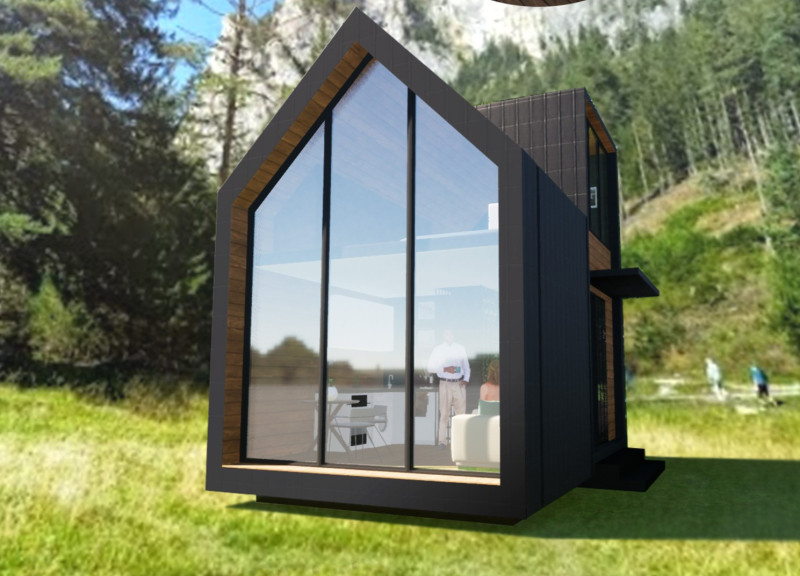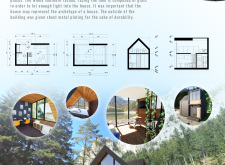5 key facts about this project
The primary function of this architectural project is to provide a comfortable and inviting living space that feels spacious despite its limited footprint. By emphasizing a streamlined layout that fosters usability, the design allows for various activities, from social gatherings to moments of solitary reflection, all within a cozy yet expansive atmosphere. The project succeeds in creating an environment where daily living is enhanced by its thoughtful organization and integration with nature.
A key feature of the design is the spatial organization, which strategically positions communal areas such as the living and dining spaces to flow into one another. This approach minimizes the use of partition walls, inviting openness and fluidity throughout the interiors. The large windows on the southern façade are also a notable aspect, as they provide an abundance of natural light, further enhancing the sense of spaciousness. This glazing not only brightens the interior but also establishes a continuous visual dialogue between the indoor and outdoor settings, allowing residents to feel connected to the serene lakeside landscape.
Materiality is another essential component that shapes the overall character of "Little Place-Big Space." The exterior features sheet metal plating, a pragmatic choice that ensures durability in the face of environmental elements while offering a modern aesthetic that harmonizes with the natural surroundings. Inside, the use of warm wood finishes adds an inviting touch that contrasts beautifully with the sleekness of the metal exterior. This combination of materials reinforces the project’s commitment to sustainability and ecological sensitivity, as both selections reflect a careful consideration of their environmental impact.
The architectural form of the building further emphasizes harmonious coexistence with its environment. Featuring a pitched roof that nods to traditional housing styles, the structure effectively channels rainwater while maintaining a low profile against the scenic backdrop. This shape is both functional and representative of a classic home, showcasing the project’s intention to reinterpret familiar forms in a contemporary light.
One particularly unique aspect of the design is its innovative use of natural light. By prioritizing large glass panels, the project maximizes daylight penetration, creating an interior ambiance that changes with the sun’s trajectory. This thoughtful lighting strategy not only elevates the living experience but also contributes to energy efficiency, reducing dependence on artificial lighting.
Throughout the project, notable attention to detail manifests in various design elements. The interplay of light and shadow, combined with the sophistication of material choices, enhances the aesthetic appeal while maintaining practicality. These characteristics render the design both visually attractive and functionally efficient, appealing to those who prioritize comfort and simplicity in their living space.
In essence, "Little Place-Big Space" is a well-considered architectural response to the challenges of modern living, embracing minimalism while fostering a deep connection to the environment. The combination of practical design solutions, thoughtful material applications, and an emphasis on natural light creates a retreat that invites relaxation and reflection. For a deeper appreciation of the project and to explore its architectural plans, sections, and innovative design ideas, readers are encouraged to delve into the project presentation for further insights.























